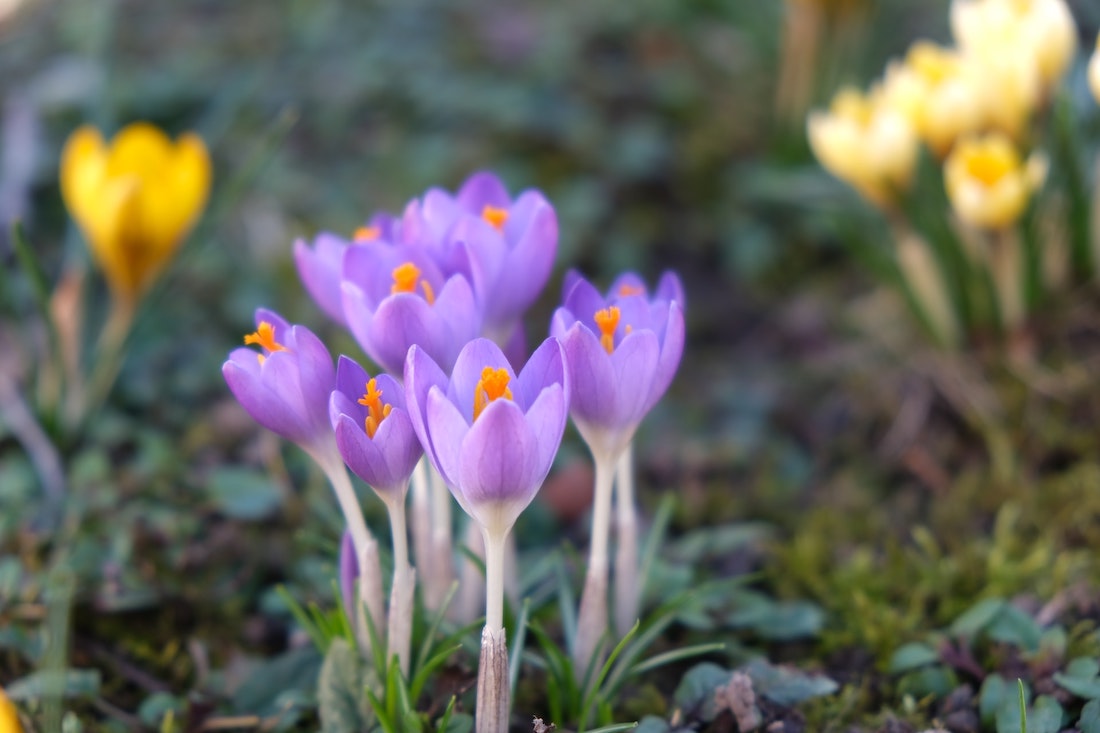How the Shamanic Journey Transformed My Meditation Practice
Is it possible for us to reclaim mysticism as a vital foundation of our path? The post How the Shamanic Journey Transformed My Meditation Practice appeared first on Tricycle: The Buddhist Review.

Many of my earliest childhood memories take place in nature. Sitting at the banks of a creek in rapt silence, marveling at the tenacity of crocuses blooming in late winter, and singing, drumming, and dancing surrounded by forests and fields. In my relationship to the earth, I found wisdom, enchantment, and magic. Truly, nature was my first dharma teacher. While I did not have the language for this at the time, my fingers can now trace the shamanic undercurrent present in these earliest experiences of the sacred.
It is this undercurrent that has become a transformative part of my dharma practice and my life. And, it appears I’m not alone in this. Whether through books like Zenju Earthlyn Manuel’s The Shamanic Bones of Zen, the rising popularity of wilderness meditation retreats, or even the growth of psychedelic-assisted therapies, we are now waking up to many of the shamanic foundations of meditation, dharma, and healing.
It was only after many years of Buddhist practice that I found myself reconnecting with the powerful experiences of my childhood and training as a shamanic counselor. I now use shamanic journey work and other practices for spiritual inquiry, personal growth, and healing. While at times this kind of practice contrasted with my Theravada Buddhist background, it has also brought me back to the magic and wonder of some of my most meaningful meditation retreats, and given me new tools to strengthen my own practice and support others in theirs.
At the heart of things, Buddhism and shamanism both share some essential traits: they seek to explore consciousness and to bring forth a type of liberation, balance, or healing. The word “shaman” even has etymological ties to the spiritual seekers of the Buddha’s day. Stemming from the term “saman,” meaning “one who knows,” in the Tungusic language family of Eastern Siberia, this root word is strikingly similar to the Pali “samana” and the Sanskrit “sramana”—a contemplative, wandering ascetic or monastic, much like the Buddha himself. The concept of shamanism is not specific to one culture or lineage, but rather refers to earth-based spiritual practices that can be found in the history of nearly every indigenous culture, from Tibet to Ireland to Senegal, and beyond. Wherever humans have connected in a sacred way with the earth, it appears that some form of shamanic practice has sprung forth.
One of the most common practices found across numerous cultures is the shamanic journey, a meditative form typically accessed through a process of visualization, accompanied by repetitive, rhythmic drumming, with the drum’s beat serving as an auditory driver that entrains the practitioner into a trancelike state. The practitioner enters into this altered state of consciousness and connects with a guide—a source of inner wisdom that can take the form of a light, a deity like Kuan Yin, an animal, an aspect of the earth itself, or something else entirely—for the purpose of healing and spiritual inquiry. Through this connection, a person may have visionary experiences and come away with insights that could not be accessed by our everyday, thinking mind. In fact, recent findings from the University of Michigan’s Center for Consciousness Science indicate that shamanic journey work can lead to experiences of unity, ego dissolution, and insightfulness at levels similar to or greater than a range of psychedelics.
In this practice, wisdom and healing are revealed through imagery, messages from a guide, and the intuitive sense of the person embarking on the journey. I have worked with clients who experienced collapse or harm in their sangha to gain, through the journey, a sense of closure where none was realistically possible in ordinary life. In the altered state of the journey, they received wisdom and support from their guides, spoke their mind to a teacher they were no longer in contact with, and reclaimed their own power and a newfound sense of peace. In other situations, those I work with have been pointed toward deeper truths: a young woman struggling with trauma was offered the safety and mirroring from her guide that she never received as a child and was able to glimpse her inherent worthiness. A man grappling with a profoundly painful inner critic was able to see the critical voice as empty of self and ready to be released.
I have seen this kind of journey support clients in deeply understanding the inner workings of their own suffering, building a deeper sense of trust in themselves and their practice, and bringing peace to places where confusion, craving, or aversion previously ran rampant. It is an incredibly powerful contemplative and therapeutic form, and I love to share it with longtime meditators for this reason.
But long before I came to the shamanic journey, I fell in love with the dharma. In my early days of dharma practice, I voraciously attended as many silent retreats as I could. I found in the silence a profound joy and a sense of reconnection to the states of awe and mystery I experienced as a young child. In my first retreats, long-forgotten memories rushed back: bringing chocolates and other offerings to a nearby stream and leaving them for the unseen beings I imagined lived there, closing my eyes and sitting alone in my bedroom as a 6-year-old, watching thoughts appear like bubbles from the bottom of a deep lake. Retreat practice brought me back to those formative experiences of the sacred.
As modern practitioners of an ancient mystic tradition, how do we make space for its inherent magic in the 21st century?
Over the years, I listened as elder teachers shared their experiences in India with iconic figures like Dipa Ma, who was known to have precise recall of past lives, among many other miraculous abilities. Dipa Ma became a beacon for me—not just as a mystic, but also as a woman practitioner and a householder. But while my teachers’ voices were filled with awe, their stories often left me feeling as though that possibility of powerful, mystic experience was relegated to another era. Where was the space for encounters with the sacred within our hectic, technology-driven lives?
While communities around me rode the cresting waves of secular mindfulness, this question lingered. Beginning around 2010, as smartphone meditation apps gained prominence and many Western convert Buddhist communities embraced the scientific study of mindfulness, I began to encounter a dharma that was increasingly touched by the influences of capitalism; productivity culture; the erasure of earth-based, Asian, and indigenous practices; and a patriarchal mistrust of the numinous. This modern dharma was in an accessible, secular language that even spiritual skeptics could trust, and research had shown over and over that these ancient practices were effective and evidence-based. But I wondered, how much of the mystic, intuitive side of practice were we sacrificing in exchange for scientific gravitas?
Throughout this time, I also encountered several teachers who could embrace and lead from this place of mysticism. One teacher, in a tone that seemed half reverent and half mischievous, smiled and exclaimed, “The Buddha was a shaman!” during her dharma talk on a two-month retreat. Even without shamanic training, something in those words rang with truth for me, and I held them close.
As I began to encounter the shamanic journey, this teacher’s words resonated even more, and it felt clear that the mystic aspect of my practice had found a welcoming home. Quickly, I saw that journey work and meditation complemented each other beautifully. Through the journey, I could more easily access many of the transcendent experiences and insights that occurred for me in periods of intensive silent retreat, and together, shamanic and Buddhist practices offered new avenues to explore my understanding of the dharma.
This shifted my relationship to practice. Instead of “just noting,” as so many teachers would encourage during more visceral or visionary experiences in meditation, I found that I could call on my journey practice for support on the cushion, listen to my own intuitive knowing, and be open to the experience itself as a teacher in a deeper way. With this approach, practice became more vibrant, more creative, and more connected to the natural world. The path began to have a greater sense of wholeness because no parts of myself or my experience were left out.
Today, when I guide others in shamanic journey work, we often explore these territories of exclusion. What has been left out in our practice that longs to be integrated and included? What messages has our culture given us about spirituality, and how does that influence our experience of the sacred? Can we trust intuitive awareness, or are we gripped with doubt and skepticism? All of this is part of our practice and part of the path.
Like most shamanic practitioners, the Buddha spent time in nature in a deep meditative state, connecting with seen and unseen aspects of reality, and bringing back wisdom that could ease suffering. While times have changed, and we may not be wandering ascetics or samanas anymore, this continues to be our task. As modern practitioners of an ancient mystic tradition, how do we make space for its inherent magic in the 21st century?
Perhaps it first begins with opening our minds and imaginations to new possibilities. So many Buddhist stories are shared through the more animistic or shamanic lenses of the Buddha’s time but today are seen only as metaphors. The devas appear at the birth of the Buddha, a group of monastics bring metta practice to a haunted forest, or the earth herself rises up on the eve of the Buddha’s awakening. In the shamanic context, these encounters might be seen as visionary messages emanating from an extraordinary field of wisdom and compassion, but in our modern culture they easily shrink down to a fiction.
Of course, these stories are incredibly useful as simple allegories, but I wonder, has our history of mystic experience turned into myth because our modern imagination cannot contain the possibility of something more magical, more wild? Is it possible for us to reclaim mysticism as a vital foundation of our path? What would the historical Buddha advise—the one who sat at the foot of the Bodhi tree in a profoundly altered state of consciousness? I imagine he might smile gently and say, “Ehipassiko”—come see for yourself.

 Tfoso
Tfoso 
































